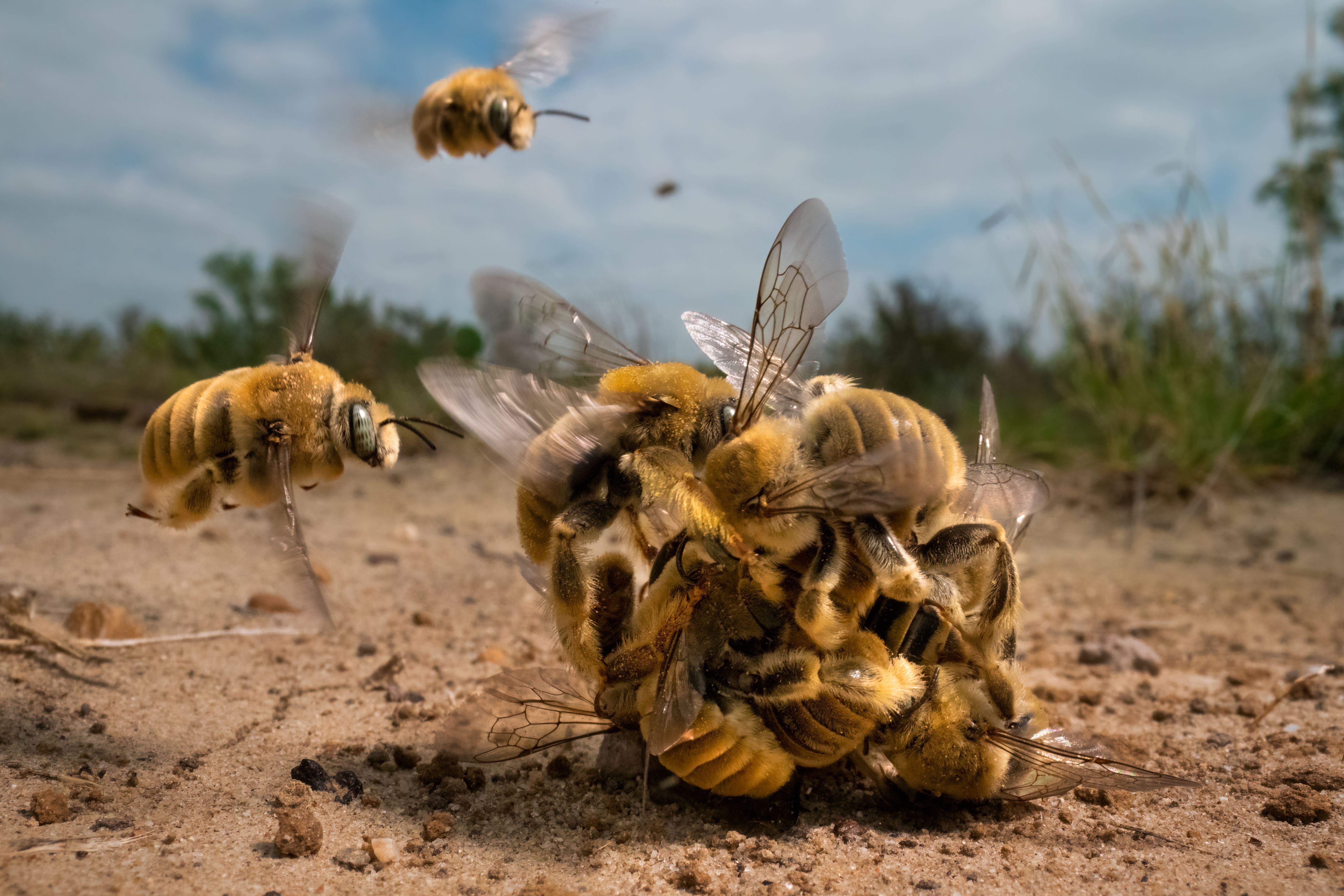Winning images in the Wildlife Photographer of the Year competition revealed
Judges looked at 38,575 entries from 93 countries.

Your support helps us to tell the story
From reproductive rights to climate change to Big Tech, The Independent is on the ground when the story is developing. Whether it's investigating the financials of Elon Musk's pro-Trump PAC or producing our latest documentary, 'The A Word', which shines a light on the American women fighting for reproductive rights, we know how important it is to parse out the facts from the messaging.
At such a critical moment in US history, we need reporters on the ground. Your donation allows us to keep sending journalists to speak to both sides of the story.
The Independent is trusted by Americans across the entire political spectrum. And unlike many other quality news outlets, we choose not to lock Americans out of our reporting and analysis with paywalls. We believe quality journalism should be available to everyone, paid for by those who can afford it.
Your support makes all the difference.The image of a buzzing ball of cactus bees spinning over the hot sand on a Texas ranch has helped its creator to win the coveted Wildlife Photographer of the Year competition.
The bee-level close-up was captured by US photographer Karine Aigner and makes her the fifth woman in the competition’s 58-year history to claim the grand title award.
The other main title of Young Wildlife Photographer of the Year 2022 was won by 16-year-old Katanyou Wuttichaitanakorn, of Thailand, for his image about the beauty of a whale.
Ms Aigner’s image was praised for its “sense of movement and intensity” by the judges at London’s Natural History Museum, who develop and produce the Wildlife Photographer of the Year competition.
All except one of the bees in the close-up are males, who are intent on mating with the single female at the centre.
Like most bees, they are threatened by habitat loss, pesticides and climate change, as well as farming practices that disrupt their nesting grounds.
Chairwoman of the judging panel, Roz Kidman Cox said: “Wings whirring, incoming males home in on the ball of buzzing bees that is rolling straight into the picture.
“The sense of movement and intensity is shown at bee-level magnification and transforms what are little cactus bees into big competitors for a single female.”
The success of Thai teenager Katanyou Wuttichaitanakorn in winning the Young Wildlife Photographer of the Year title was due to his fascination with the colours of a baleen whale.
He was intrigued when a Bryde’s whale surfaced close to his boat, by the contrasting colours and textures of its dark skin, pink gum and the brush-like feeding mass that hung from its top jaw.
The youngster, who has been a keen naturalist and a photographer since he was 12, managed to capture detail, including some tiny anchovies, in what the judges felt was a “dynamic composition”.
Like other baleen whales, Bryde’s use a technique known as lunge-feeding to catch large numbers of small schooling fish and then filter the small prey from the ocean.
Ms Cox said: “Out of the jaws of a Bryde’s whale comes this dazzling creation.
“The pin-sharp detail of the tiny anchovies is set against an abstraction of colour with the weave of brown baleen hair rimmed by a cascade of water drops.”
The two grand title awards were picked from the winners of 19 categories which highlighted the natural world in all its wonder and diversity.
They were among 38,575 entries from 93 countries which were judged on their originality, narrative, technical excellence and ethical practice.
Among the other images are a portrait of a bear in a disappearing habitat, a dying lake, the courtship display of a Canary Islands houbara bird and the electrifying reproductive dance of a giant sea star.
The bears, which are found from western Venezuela to Bolivia, were captured by Daniel Mideros, of Ecuador, who set up camera traps along a wildlife corridor used to reach high-altitude plateaus. The bears have suffered massive declines as the result of habitat fragmentation.
The image of an osprey sitting on a dead tree as it waits for the fog to lift was caught by Ismael Dominguez Gutierrez, of Spain.
The courtship display of a Canary Islands houbara bird was caught in the light of the moon by Jose Juan Hernandez Martinez, of Spain.
He dug himself a low hide and caught the bird’s puffed-out profile as it took a brief rest.
Daniel Nunez, of Guatemala, used a drone to capture the contrast between a forest and the algal growth on Lake Amatitlan.
He hopes the photograph will raise awareness of the impact of contamination on the lake which takes in about 75,000 tonnes of waste from Guatemala City every year.
An image of the reproductive dance of a giant spawning sea star was taken by American/Japanese photographer Tony Wu and shows water filled with sperm and eggs.
The “dancing” shape of the spawning sea star as it rises and sways may help release eggs and sperm, or help sweep the eggs and sperm into the currents where they fertilise together in the water.
An exhibition of the top images submitted to the competition opens at the Natural History Museum in London on October 14, before going on a UK and international tour.
Dr Doug Gurr, director of the Natural History Museum said: “Wildlife photographers offer us unforgettable glimpses into the lives of wild species, sharing unseen details, fascinating behaviours and frontline reporting on the climate and biodiversity crises.
“These images demonstrate their awe of and appreciation for the natural world and the urgent need to take action to protect it.”